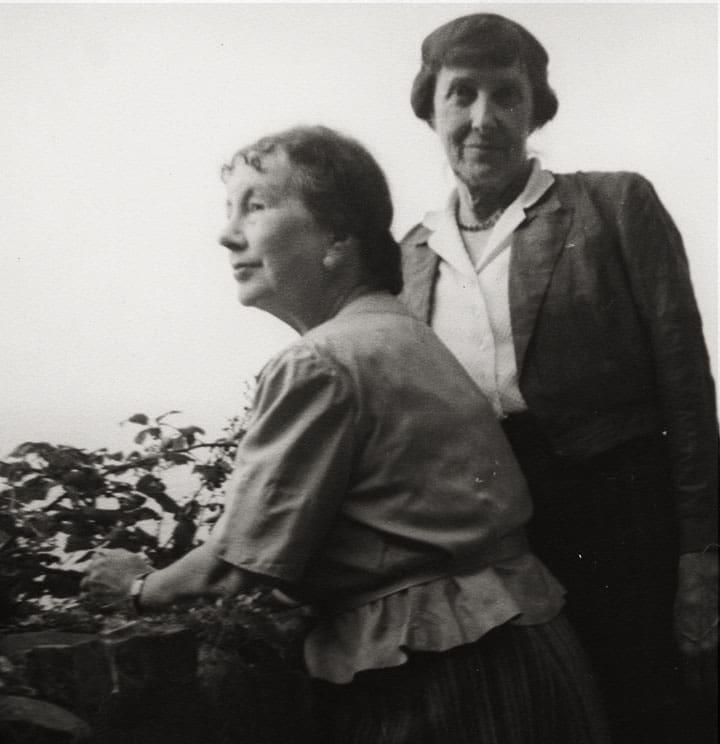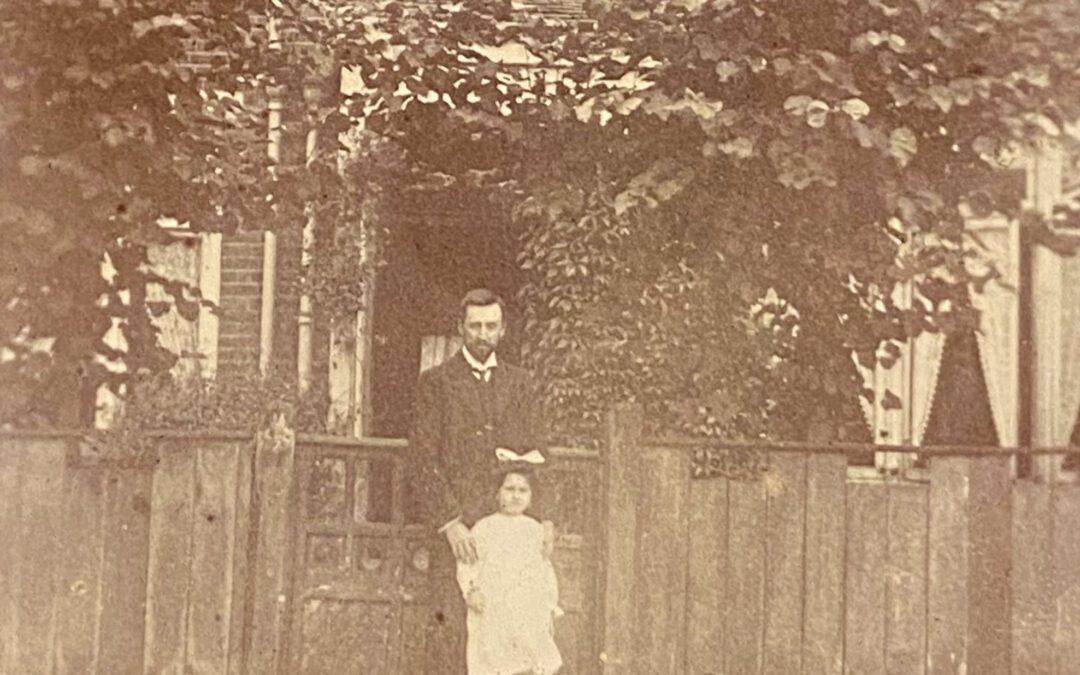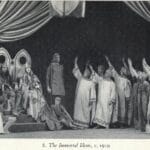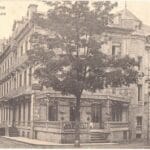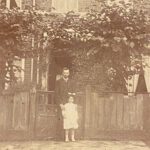What can Mary Stella Edwards’ early childhood and school days tell us about her hyphenated career as poet, artist, and commercial artist?
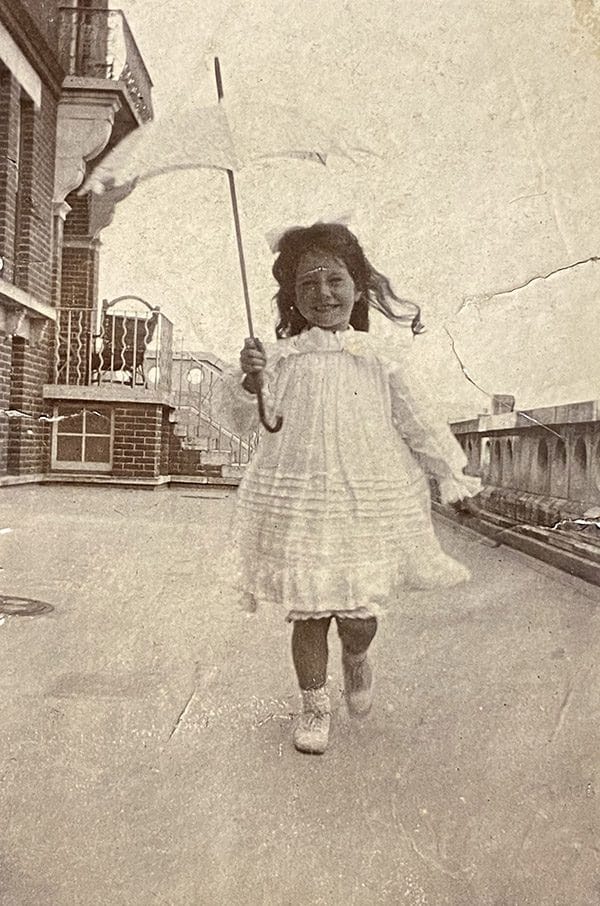
Photo: Ackland and Edwards archive
Mary Stella Edwards’ first diary starts in 1898, which came as a bit of a surprise given that it’s the year she was born. After an initial observation that she had excellent handwriting for a baby, I realised that these entries were, of course, written much later. At some point in the early 1920s it seems that Edwards decided that she wanted to keep her journals for posterity, but that the diaries and notes she’d been keeping from around the age of 13 would not do. She began writing down her early memories year by year.
The earliest entries are heavily weighted towards family holidays in the UK. Perhaps she was supplementing her memory with photograph albums? I’ve been able to match certain events with photographs – such as her holding a borrowed sunshade.
Beginning school
Mary Stella Edwards began school in 1904, in a house in Staines “under Miss Tothill”, though she says she had already learned to read aged 4. By 1906 she was at school at Belle Vue, a private house on Thorpe Road, sharing a series of governesses with “the Gundry trio” and other local children. (She stayed in touch with the Gundrys into her 80s.) These years are filled with delicious details such as:
“Banged Ronald Gundry’s head with a cricket bat to see what would happen. He said nothing. Dorothy screamed and was led away.”
It’s difficult to know what the education was like at Belle Vue, as Mary Stella never mentions it. But she does write about her father reading her Wordsworth, and she had a “botanizing box” on holiday in Wales. She was already an avid reader, and also mentions “the intense pleasure I felt on being given a box of chalks, all the colours pointing up … in an upright box.”
In 1909 this happy group was broken up, and the children went their separate ways according to gender. Mary Stella Edwards and Dorothy Gundry went to the Welsh Girls School, in Ashford near Staines (now St James Senior Boys’ School). Ronald Gundry to the Cathedral Choir School in Oxford.
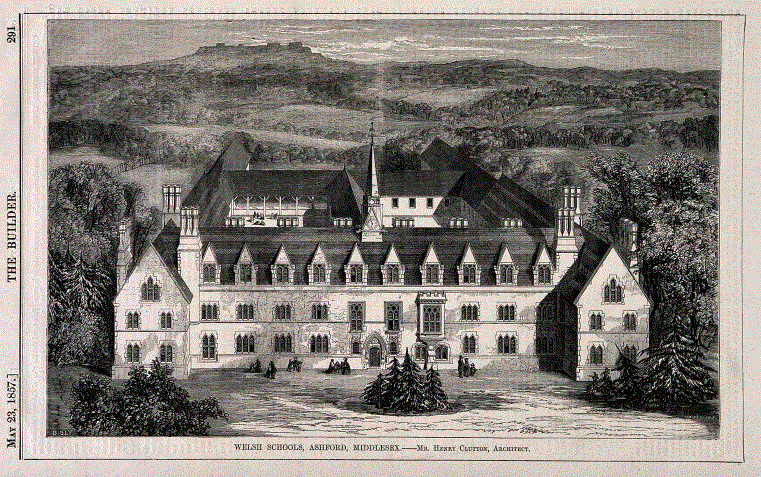
Welsh Girls School
Edwards’ time at the Welsh Girls School was not so happy. Four years after leaving school, Mary Stella met her “drawing mistress”, Miss Bunyard, by chance in a station waiting room, with Edwards “managing to be quite polite, & I think even interesting”. This suggests their subsequent shared train journey was a little strained. In 1974, Edwards added a note: “The only thing I remember her ever saying is that these were the happiest days of my life! And I thought Heaven help the future if it’s worse than this!”
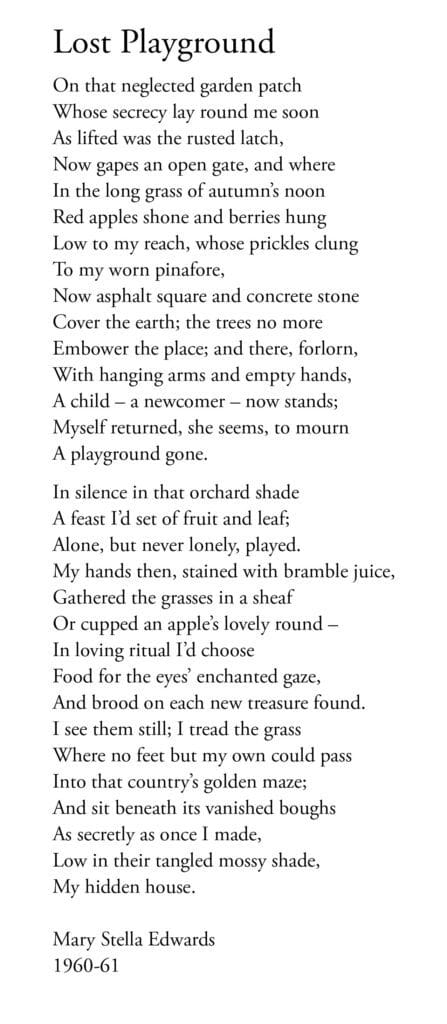
Mary Stella found it difficult to fit in with the rest of her class. She was precocious – extremely well read and with a religious fervour, which came from her parents. A delight in quoting Shakespeare didn’t necessarily result in good grades. Despite gaining distinctions in English Literature, Religious Knowledge and Drawing in 1914 – even coming “First in England and the Colonies in the Cambridge Exam” for Drawing – she received third-class awards for everything else.
She doesn’t say so, but I can’t help concluding that the school curriculum was focussed on creating wives rather than scholars. Essay topics included bangers such as: “History is the Biography of Great Men” and “The Respective Importance of Tongue, Pen and Sword”. And two afternoons a week were spent doing mending. Towards the end of her school career, when Edwards became more confident and popular, her class requested that she read poetry to them as they worked on their mending.
Towards becoming a writer…
In 1912 Mary Stella began to consider seriously the idea of becoming a writer, after several of her poems and her photograph were published in the Tailors’ Magazine at the instigation of T.H. Holding. She had a very good English literature teacher in Miss (Dora) Hogan, who read the class poems by her cousin Winifred Letts. Miss Hogan (or Hogey as she was affectionately known) gave Edwards a book of Blunden’s poetry with the inscription “To Mary Stella, who borrows from none” when she left school. Meanwhile, Edwards had joined the Staines Literary and Debating Society in 1913, where she frequently read her poems aloud. Her out-of-school literary education continued, as her father introduced her to, or read her, classic texts.
Why Art College?
I have often wondered why Mary Stella went on to study art at Battersea Polytechnic and then Regent Street Polytechnic, rather than Literature at university. It may have been money – a university education was terrifyingly expensive. Or it may have been her education – as Cambridge and Oxford required both Greek and top marks. By 1914 she was winning school prizes for Drawing, Latin and Botany, but her exam marks remained disappointing. In 1916, the external examiners again awarded her third class honours (“My usual mediocre achievement”) but with distinctions in Religious Knowledge and Drawing. There seemed to be a disconnect between Mary Stella’s abilities and what the external examiners were testing.
In 1915 her teacher Miss Jones urged her to start work for her “Inter B.A.” (university entrance?). But Edwards wrote: “I have other plans”. Her diary entry for 20 January 1916 reads: “Tonight we made the decision that I am to give up the idea of any more exams, leave school in the summer, and go to a School of Art.”
And that’s when the fun began.
Previous blogpost: Finding Judith Ackland in the Archive
Next blogpost: Mary Stella Edwards and Judith Ackland: A love story
